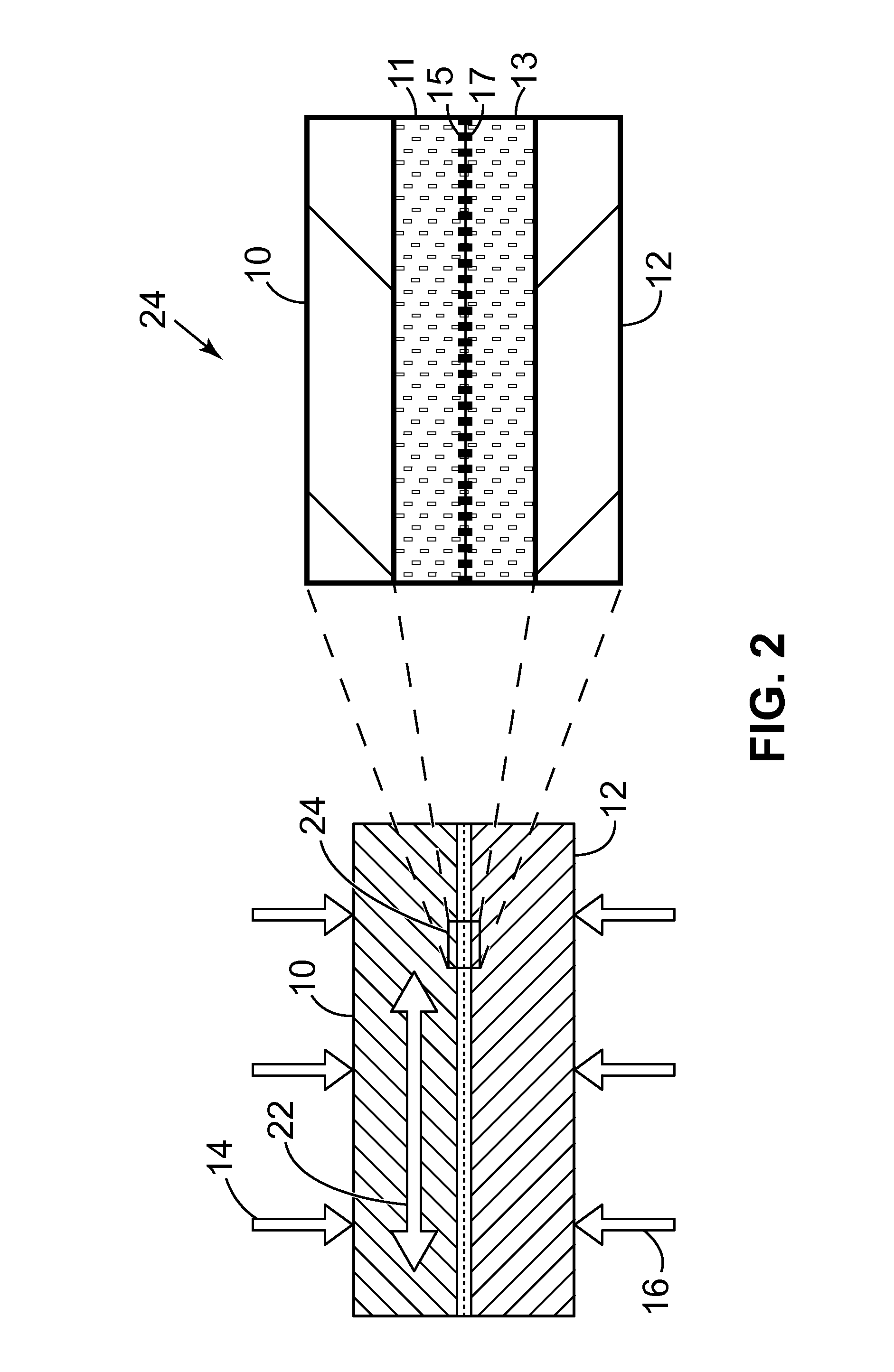Composite biaxially textured substrates using ultrasonic consolidation
a technology of ultrasonic consolidation and substrates, applied in the direction of manufacturing tools, soldering devices, auxillary welding devices, etc., can solve the problems of difficult to achieve the desired texture and desired strength
- Summary
- Abstract
- Description
- Claims
- Application Information
AI Technical Summary
Benefits of technology
Problems solved by technology
Method used
Image
Examples
example i
[0053]A first sheet 80 comprising a biaxially textured nickel-tungsten alloy is bonded to a second sheet 82 comprising type 316 stainless steel. The rotating sonotrode 74 applies downward normal force of 1000-2500N and provides an oscillating force with an amplitude in the range of 15-25 microns. The sheets 80, 82 are fed through the rollers 74, 76 at a feed rate of approximately 20 ipm.
[0054]FIG. 9 illustrates another example of the present invention, similar to that shown in FIG. 8, with a few differences. A base plate 83 is used instead of a base roller. The base plate 83 is optionally heated by radiative heating 84.
[0055]FIG. 10 illustrates another example of the present invention, similar to those shown in FIGS. 8, 9, with further differences. A first pair of resistive heaters 90, 92 is provided above and below the sheets 80, 82, and between the payout spools 70, 72 and the rotating sonotrode 74. Resistive heaters 90, 92 preheat the sheets 80, 82 in order to enhance the bonding...
PUM
| Property | Measurement | Unit |
|---|---|---|
| yield strength | aaaaa | aaaaa |
| yield strength | aaaaa | aaaaa |
| Curie temperature | aaaaa | aaaaa |
Abstract
Description
Claims
Application Information
 Login to View More
Login to View More - R&D
- Intellectual Property
- Life Sciences
- Materials
- Tech Scout
- Unparalleled Data Quality
- Higher Quality Content
- 60% Fewer Hallucinations
Browse by: Latest US Patents, China's latest patents, Technical Efficacy Thesaurus, Application Domain, Technology Topic, Popular Technical Reports.
© 2025 PatSnap. All rights reserved.Legal|Privacy policy|Modern Slavery Act Transparency Statement|Sitemap|About US| Contact US: help@patsnap.com



